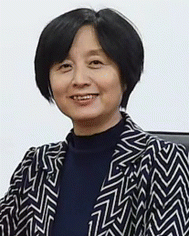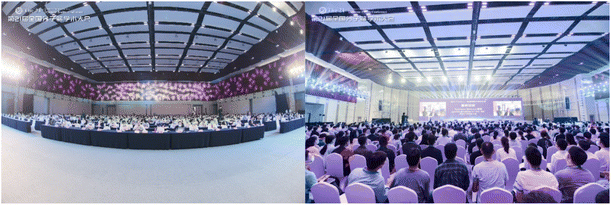Porous materials for future energy
Zhengxing
Qin
*,
Xinmei
Liu
* and
Zifeng
Yan
*
State Key Laboratory of Heavy Oil Processing, College of Chemistry and Chemical Engineering, China University of Petroleum – East China, Qingdao 266580, China. E-mail: zhengxing.qin@upc.edu.cn; lxmei@upc.edu.cn; zfyancat@upc.edu.cn
The group of nanoporous materials comprises a large number of different materials including, but not limit to, zeolites and zeotypes, metal–organic frameworks, carbon materials, polymers, or mesoporous materials such as silicas or metal oxides. Owing to their large accessible surface area and defined pore structures, these porous materials are central to many practical applications such as heterogeneous catalysis, adsorption, filtration, and gas separation. In particular, the use of zeolites and related porous materials is a key aspect of many technologies relevant to energy conversion/storage, environmental protection/depollution, materials science, etc.
To showcase the most recent scientific and technological advances in zeolites and related porous materials from both China and abroad, the biennial Chinese Zeolite Conference, organized by the China University of Petroleum – East China and co-chaired by Prof. Zifeng Yan and Prof. Svetlana Mintova, was held in Qingdao, China, from 27th to 30th September 2021 (Fig. 1). Interestingly, this conference was the 21st Chinese Zeolite Conference in the 21st year of the 21st century. Under the theme “Porous Materials for Future Energy”, the conference topics covered synthesis, modification and characterization of zeolites and related porous materials; host–guest chemistry; functional porous materials; adsorption, separation and diffusion; porous materials in catalytic applications and theoretical calculations.
During the conference, over 1200 Chinese delegates attended the conference in Qingdao, and over 250 Chinese delegates and 30 international experts participated in the conference virtually. More than 800 abstracts were submitted to the conference. There were 12 invited plenary speakers, 31 keynote speeches, 63 invited talks, and 200 oral and short oral presentations, in addition to over 400 poster presentations. A forum on the theme “Advanced Porous Materials for Sustainable Development” was held during the conference. In addition, the 2021 International Symposium on Zeolites and Related Porous Materials with 24 distinguished invitees from 17 different countries was held on 28th–29th September 2021. This event was open to all participants in the field of zeolites and related porous materials.
During the conference, the third National Zeolite Awards of China was announced. The National Zeolite Achievement Award of China was awarded to Prof. Fengshou Xiao from Zhejiang University. The Youth Researcher Awards were awarded to Dr Chuanmin Wang from Sinopec Shanghai Research Institute of Petrochemical Technology, and Prof. Yonghui Deng from Fudan University. The Early Career Awards were awarded to Prof. Libo Li from Taiyuan University of Technology, Prof. Qiming Sun from Soochow University, Dr Xiao Chen from Tsinghua University, and Dr Xinqiang Wu from the Dalian Institute of Chemical Physics, Chinese Academy of Sciences. Fifteen awards for oral and 22 for posters were selected for outstanding research work and presentation.
A special issue of Inorganic Chemistry Frontiers entitled “Synthesis, modification and tailoring of properties of nanoporous materials” was launched after the conference. In the field of rationalized synthesis of zeolites and their applications, Qiming Sun and Ziqiang Qu (https://doi.org/10.1039/D2QI00653G) presented a comprehensive review summarizing the latest research progress in the synthesis of state-of-the-art zeolite-supported metal catalysts, including monometal catalysts, bimetal catalysts, and single-site catalysts, and their outstanding catalytic activity in propane dehydrogenation reactions. Longfeng Zhu, Feng-Shou Xiao and co-workers (https://doi.org/10.1039/D1QI01636A) reviewed the recent advances in the synthesis and application of the SSZ-39 zeolite that has an AEI structure. Hongbin Zhang, Yi Tang and co-workers (https://doi.org/10.1039/D2QI00928E) reported highly dispersed oligolayer MWW nanosheets (ca. 2–4 layers) with c-axis-penetrated mesopores, prepared by H2O2-induced micro-explosions coupled with ethanolamine pre-treatment from the multilayered precursor MCM-22P. Eugenio Alladio, Francesca Bonino and co-workers (https://doi.org/10.1039/D2QI00643J) communicated a rationalized synthesis methodology, where the rational study of the synthesis of TS-1 zeolite using the Design of Experiments approach was reported to discern the synthesis parameters that significantly impact the catalyst properties. Baojian Shen and co-workers (DOIhttps://doi.org/10.1039/D2QI00328G) reported the rapid synthesis of plate-like NaY zeolite nanocrystals through an artificial-fish-reef-breeding negative crystal strategy. Gang Kevin Li and co-workers (https://doi.org/10.1039/D1QI01571K) developed a sustainable pathway – fusion followed by hydrothermal treatment – to convert the fly ash produced from circulated fluidized bed combustion into a commercial grade zeolite A product. Xiaolong Li, Wenfu Yan and co-workers (https://doi.org/10.1039/D1QI01492G) reported a facile and mild alkali fusion method for the activation of lithium slag and the synthesis of zeolite A with excellent crystallinity using the activated lithium slag as a valuable resource. Linying Wang, Juan Tan, Peng Tian and co-workers (https://doi.org/10.1039/D2QI00246A) explored the synthesis of high silica zeolite Y with the assistance of solid seeds using TBAOH as the organic structure directing agent. Well-crystallized high silica zeolite Y with a SiO2/Al2O3 ratio of up to 15.9 can be prepared in 2.0–3.5 days. Youhe Wang and co-workers (https://doi.org/10.1039/D2QI00388K) designed a triazine-based bolaform quaternary ammonium bifunctional template for the synthesis of hierarchical ZSM-48 zeolite with a stacked nanorod morphology. Yuanyuan Yue and co-workers (https://doi.org/10.1039/D1QI01414E) reported a CHA zeolite prepared via template-free interzeolite transformation from FAU zeolite that is highly active for NH3-SCR in a wide temperature range from 200 to 600 °C. Ge Yang, Hailing Guo and co-workers (https://doi.org/10.1039/D2QI00667G) reported the preparation of a sulfur-resistant Ni/Al2O3@SOD core–shell catalyst by coating a Ni/Al2O3 core with a sodalite-type zeolite membrane. The sodalite shell exhibited two effects – blocking sulfur-containing molecules and providing a hydrogen spillover channel, which strengthened the performance of Ni catalyst in the hydrodesulfurization of dibenzothiophene. Hong Yang, Anfeng Zhang, Xinwen Guo and co-workers (https://doi.org/10.1039/D2QI00686C) reported a highly stable metal/ZSM-5 catalyst for highly shape-selective alkylation of toluene with methanol to para-xylene under demanding reaction conditions. Jiří Čejka and co-workers (https://doi.org/10.1039/D1QI01497H) investigated the catalytic behavior of a set of MWW zeolite catalysts with tunable textural properties and variable chemical compositions in the Prins–Friedel–Crafts reaction involving either butyraldehyde or benzaldehyde and compared it to that of a large pore beta zeolite. Xinmei Liu and co-workers (https://doi.org/10.1039/D2QI00941B, https://doi.org/10.1039/D2QI00694D) reported new methods for the preparation of Ni/SAPO-11 and Mo/ZSM-5 with improved metal dispersion. As for the preparation of Mo/ZSM-5 for methane dehydroaromatization, citric acid was added during the catalyst preparation using the classic incipient wetness impregnation method. The Mo dispersion improvement brought by citric acid is significant especially at high Mo loading. For the preparation of Ni/SAPO-11 for hydro-isomerization of alkanes, BMIMBF4 and lysine were used as additives that increased the electron density in the d band of Ni and promoted H activation on the catalyst. Stacey I. Zones, Alexander Katz and co-workers (https://doi.org/10.1039/D2QI01105K) demonstrated a one-pot approach combining direct hydrothermal synthesis with cetyltrimethyl ammonium cations and an organic structure-directing agent, with post-synthetic high-shear mixing treatment, synthesizes highly delaminated Al-SSZ-70 zeolite with high external surface areas of up to 347 m2 g−1.
In the field of advanced characterization, Claudia Weidenthaler and Hilke Peterson (https://doi.org/10.1039/D2QI00977C) elaborated on recent technical and scientific developments for the in situ/operando characterization of nanoporous materials. Both the well-established characterization methods and some emerging methods that have great potential for future applications are discussed. Shunsuke Asahina, Zhengxing Qin and co-workers (https://doi.org/10.1039/D2QI00952H) reported the application of low-voltage electron imaging and cross-sectional imaging techniques to visualize surface structures and show sub-surface etching of zeolites that could not otherwise be directly revealed by SEM. Zhengxing Qin, Shunsuke Asahina, Valentin Valtchev and co-workers (https://doi.org/10.1039/D2QI00313A) presented a new textural characterization approach to complement conventionally used approaches, including SEM, TEM, and physisorption. Important mesopores information, i.e., mesopore morphology, connectivity, and spatial distribution of Y zeolites obtained from NH4F post-synthesis treatment, are visualized by cross-section ultra-high resolution FE-SEM with Os coating and compared to conventional methods. Using advanced 1H–1H DQ-SQ and 1H–27Al S-RESPDOR MAS NMR techniques, Shutao Xu and co-workers (https://doi.org/10.1039/D2QI00750A) experimentally documented two intermediates for different dealumination pathways and detailed the dealumination process from the first Al–O bond breaking to the complete hydrolysis of four Al–O bonds leading to extra-framework Al species formation. Yucai Qin, Lijuan Song and co-workers (https://doi.org/10.1039/D1QI01564H) systematically investigated the formation and transformation of the hydroxyl species in the hydrated and calcined CeY zeolite through the comprehensive combination of in situ FTIR spectroscopy and thermogravimetric technology.
In the field of calculation and simulation, Chuan-Ming Wang, Zai-Ku Xie and co-workers (https://doi.org/10.1039/D1QI01556G) carried out a comprehensive study on the diffusion of ethene in small pore zeolites using molecular dynamic simulations, and proposed two simple structure descriptors to quantify the intrinsic diffusion kinetics in these cage-structured 8-ring zeolites. David Farrusseng, Benoit Coasne and co-workers (https://doi.org/10.1039/D2QI00603K) showed how adsorption-based characterization can be extended to provide morphological and topological assessment beyond state-of-the-art tools. Using a prototypical family of hierarchical zeolites as the model material, they used nitrogen adsorption at low temperature to perform extended characterization of the morphological and topological properties of the pore network in hollow zeolite particles. Georgi N. Vayssilov and co-workers (https://doi.org/10.1039/D2QI00697A) reported a computational study of the distribution of germanium ions among the double four-membered rings in SCM-14 germanosilicate and the relative stability of the SCM-14SCM-14 zeolite frameworks with different distributions of germanium ions in the absence and presence of structure-directing agents.
In the field of metal–organic framework materials, Teng Zhang, Rong Cao and co-workers (https://doi.org/10.1039/D1QI01555A) reported a highly stable Zn-pyrazolate MOF with an unprecedented Zn9O2(OH)2(pyz)12 cluster and a two-fold interpenetration network structure that exhibits high catalytic activity for CO2 cycloaddition. Xiaoqin Zou and co-workers (https://doi.org/10.1039/D1QI01600H) reported the seed-assisted synthesis of phase-pure and continuous CPM-5 membrane on a macroporous glass-frit disk for selective and permeable hydrogen separation. Libo Li and co-workers (https://doi.org/10.1039/D1QI01562A) reported the synthesis of a highly stable Hofmann-based metal–organic framework with readily available raw materials by a direct mixing method under ambient conditions. The obtained MOF is a good candidate for industrial propylene/propane separation.
In the field of carbon materials, Panpan Su, Jian Liu and co-workers (https://doi.org/10.1039/D1QI01561C) reported the one-pot synthesis of Ni-decorated carbon materials with a high graphitization degree and hierarchical pore structure that are promising electrochemical catalysts. This work provided a way to prepare metal decorated hierarchical porous carbon materials with a tunable balance between graphitization and porosity.
To close, we wish to express our sincere appreciation for the strong support from the editorial board and editorial team of Inorganic Chemistry Frontiers. We are also grateful to all the authors who have shared their insight and research progress in this special collection.
| This journal is © the Partner Organisations 2022 |




